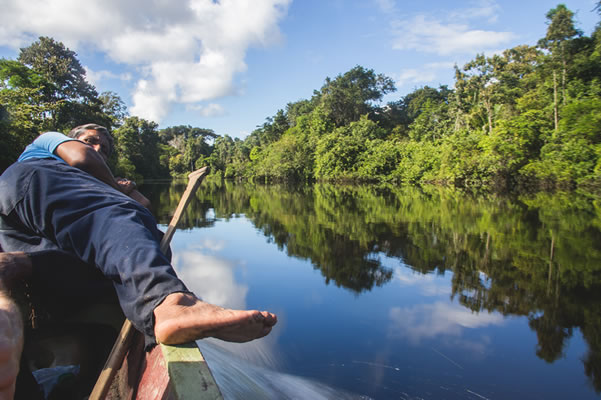About 600 people live in the Kukama Indigenous community in Cuninico, which is located in the northeastern tropical rainforests of Peru, on the banks of the Marañón River, at the start of the Cuninico creek.
As part of their belief system, the Kukama People have a spiritual relationship with the river, which they rely on for their basic needs. The community of Cuninico has always used the river and its water for bathing, washing clothes, cooking and drinking. Moreover, the principal economic activity in Cuninico is fishing. As well as being their primary source of income, the community members have traditionally eaten the fish caught in the Cuninico creek, which serve as the main source of protein in their diets.
Two studies carried out by the state in 2014 and 2016 established that the population of Cuninico is exposed to heavy metals and other toxic chemicals and that their principal source of water is also contaminated with these substances. Scientific consensus affirms that human exposure to these chemicals causes serious harm to human health.
The community has stressed that, just over three years ago, the water in the river started to taste bad, as did the food they prepared using it. They also began to suffer new and more acute health problems. Community members report symptoms including muscle cramps, stomach cramps, stomach pains, burning when they urinated, itchy rashes and/or skin sores, and miscarriages. They also said that their children suffered similar symptoms: some women reported that their children have had fevers and that their performance at school has declined noticeably.
The community has had to resort to collecting rainwater for drinking, cooking and bathing. However, many families do not have enough containers or suffer from water shortages during periods when there is no rain. They are then forced to use water from the river because there is no other source of drinking water in the community.
Since the discovery that Cuninico’s water is contaminated and that residents are exposed to heavy metals and other chemicals, no steps have been taken to determine the cause or source of the contamination of the Marañon river and the Cuninico ravine, or to establish whether the health problems reported by the community are linked to the aforementioned contamination.
The health services available to the community are inadequate and do not meet their basic needs, much less the acute risks and needs associated with exposure to toxic metals. Nor have people been given an explanation of the risks and impacts on health caused by the presence of metals in their bodies.
In February 2017, the local courts granted precautionary measures to the community of Cuninico and ordered the Ministry of Health and regional and local authorities to address the health emergency in the community. However, according to community leaders, the state has still not complied with the precautionary measures and they continue to lack access to safe drinking water and to adequate healthcare services.
Despite numerous agreements, recommendations, precautionary measures and promises, the community of Cuninico is still waiting for the state, at all levels, to fulfil its obligation to protect and guarantee their right to health.
